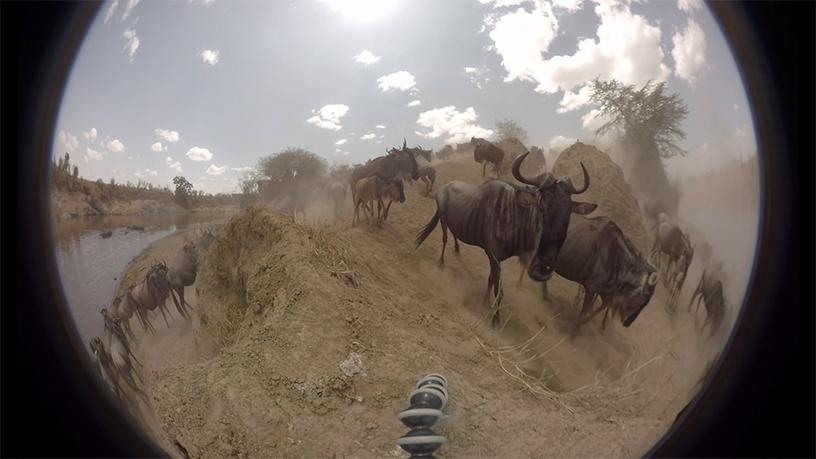
Deep VR, an activation company which creates virtual reality (VR) content for corporates, has debuted its first piece of original content: a short nature documentary that captures wildebeest in Kenya crossing the Maasai Mara.
"Exodus: The Great Migration" is a short narrated piece of footage that allows viewers to immerse themselves in the annual migration and experience it viscerally, as if they were there.
The film was shot in 10 days by the Deep VR team, who wanted to be the first to capture the spectacle in virtual reality.
Deep VR CEO Ulrico Grech-Cumbo says this had been a personal dream. "With the insane rise of VR, one year is like a decade; the idea of someone stealing our idea was too much to bear so we jumped at it.
"We decided that we couldn't just wait for the future to happen; we have to become co-creators of it. We asked ourselves: how can we use this technology to foster appreciation, education and conservation for Mother Nature in a way no technology has ever allowed before?"
The trip was mostly self-funded with some outside backers. At the time of shooting, the gear they needed did not exist so they had to create their own equipment from scratch. Grech-Cumbo calls it a "Frankenstein rig" with parts from all over the world.
"Having to self-fund this passion project was a humbling experience. We went to the US to pitch Exodus to a well-known wildlife broadcaster, but got turned down. We experimented with a crowdfunding campaign and managed to raise enough capital for a few plane tickets to Kenya," says Grech-Cumbo.
The film has since been part of the official selection for a number of film festivals, including the Wildscreen Festival, the Austin Indie Fest, the Melbourne Fringe and the VR Arles Festival, as well as the Samsung Developer Conference 2017.
It can be viewed online or viewers in Gauteng can sign-up to view the film for its first public viewings in SA today and tomorrow at the Circa art gallery in Rosebank. The top floor of the gallery has been converted into a pop-up VR cinema with swivelling chairs and specialised VR goggles.
Grech-Cumbo says getting the footage in the short space of time was really difficult and they learnt a lot about shooting 360-degree video in the process.
Firstly, the film could not be shot like a normal travel documentary from the back of a game truck with a zoom lens. Camera rigs had to be in the middle of the action with the camera man nowhere in sight.
Secondly, he says, animals were petrified of the black machine-like straight rigs, and those had to be camouflaged with nature from surrounding areas before the animals would get closer to them.
There was also several equipment malfunctions, permit issues and sick team members. Grech-Cumbo says after seven days of shooting, the Deep VR crew virtually had no footage. "That was terrifying, thinking we had invested so much time and money and now would have to return and tell people our mission had failed."
Then, on the last morning of shooting, Deep VR was able to capture two separate river crossings from three different angles, including a drone shot.
After the success of this project, the company has established a wildlife division which will focus on telling original stories about natural history, wildlife and the environment.
Exodus: The Great Migration, will form part of a broader VR series that focuses on mass migrations of mammals, birds, invertebrates and insects across the globe. The next episode will feature the Amur falcon's 60 000km journey from Mongolia to SA.
Grech-Cumbo believes owning a personal VR headset will soon be as common as owning a watch in the next few years as prices come down and tech improves.
Trendforce has predicted VR manufacturers are expected to hit five million units this year. According to a Forrester report, huge growth is expected over the next few years. It is estimated that 52 million units of VR head-mounted displays will be in enterprise and consumer use in the US by 2020.
Share